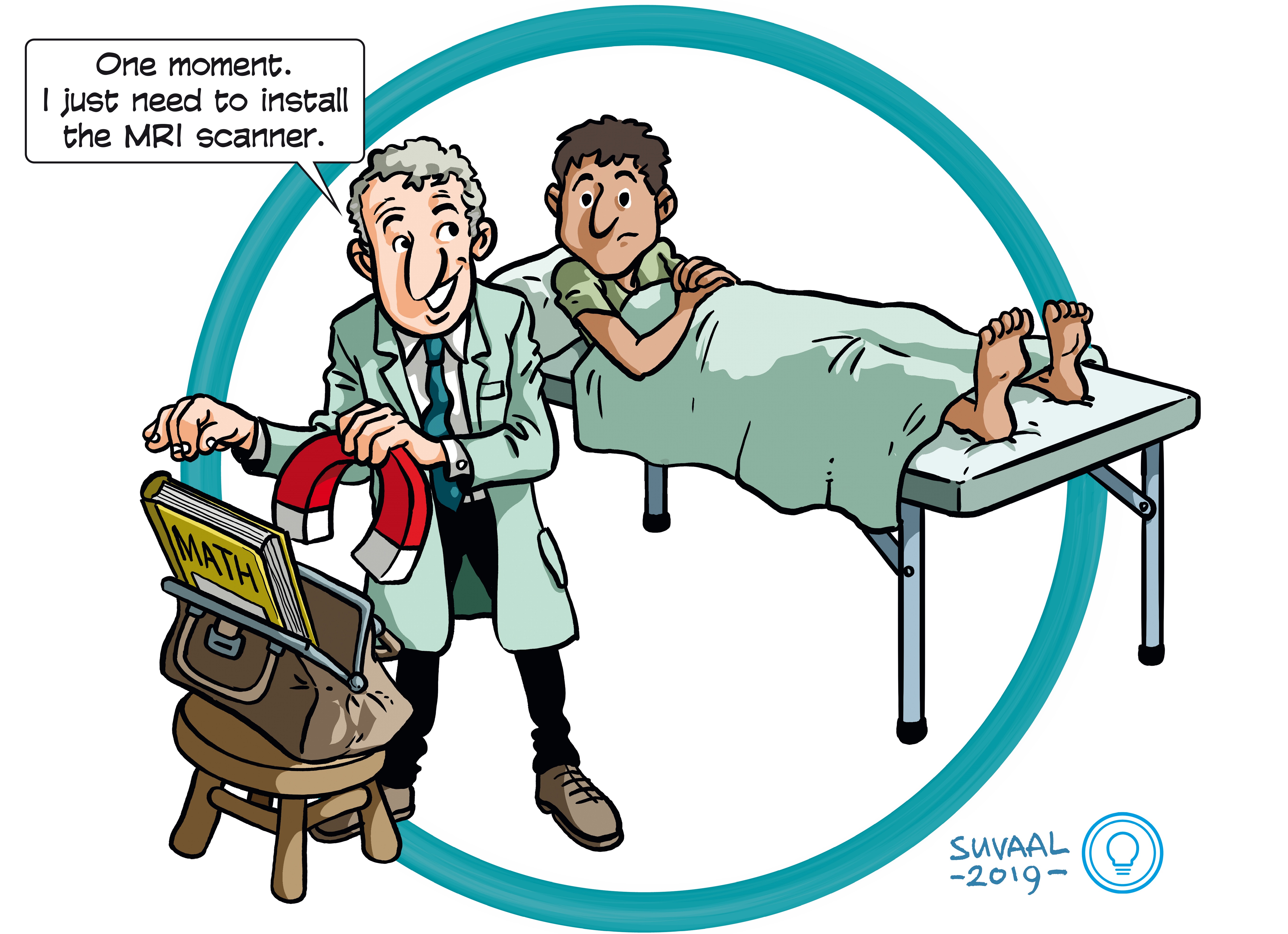Mathematical aspects of image reconstruction for a frugal MRI
Themes: Life Science & Health, Social Impact


A TRL is a measure to indicate the matureness of a developing technology. When an innovative idea is discovered it is often not directly suitable for application. Usually such novel idea is subjected to further experimentation, testing and prototyping before it can be implemented. The image below shows how to read TRL’s to categorise the innovative ideas.
Summary of the project
Medical devices play a vital role in disease detection and therapy follow-up and are commonly used in the western world. Often these devices are so costly that hospitals in developing countries cannot afford them. With this project the researchers aim to develop a simple and inexpensive MRI scanner.
Normal MRI scanners work with expensive superconducting magnets with a very high magnetic field strength. Because of this, the detected signal is of high quality, and standard mathematical techniques are sufficient to create a clear image.
To reduce the cost of the simple MRI scanner the researchers work with permanent magnets with a much lower field strength. The hardware is therefore greatly simplified, but on the other hand the image reconstruction becomes mathematically much more challenging, and this is what makes this project unique. The magnetic field can vary over time , and the signal is also much more noisy. This research focuses on advanced mathematical methods to reconstruct an accurate image from such signals.
What's next?
The ultimate aim of this project is to introduce frugal MRI to Africa for further testing under clinical conditions. To be able to do this the device needs to be certified as safe to use. When successful testing has been carried out the MRI can be made available to a wider market.
Dr. Martin van Gijzen
